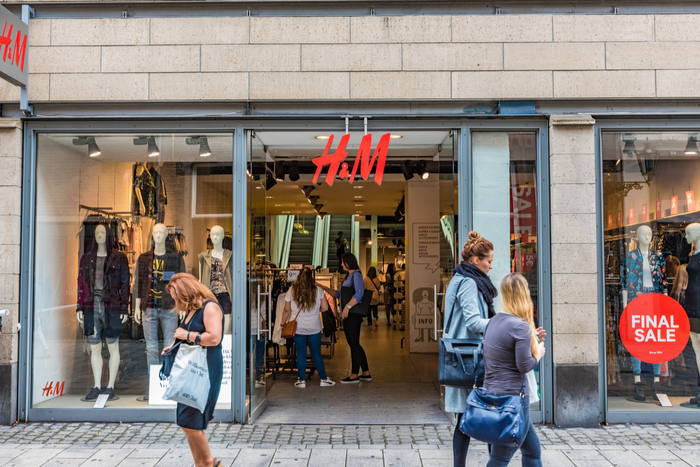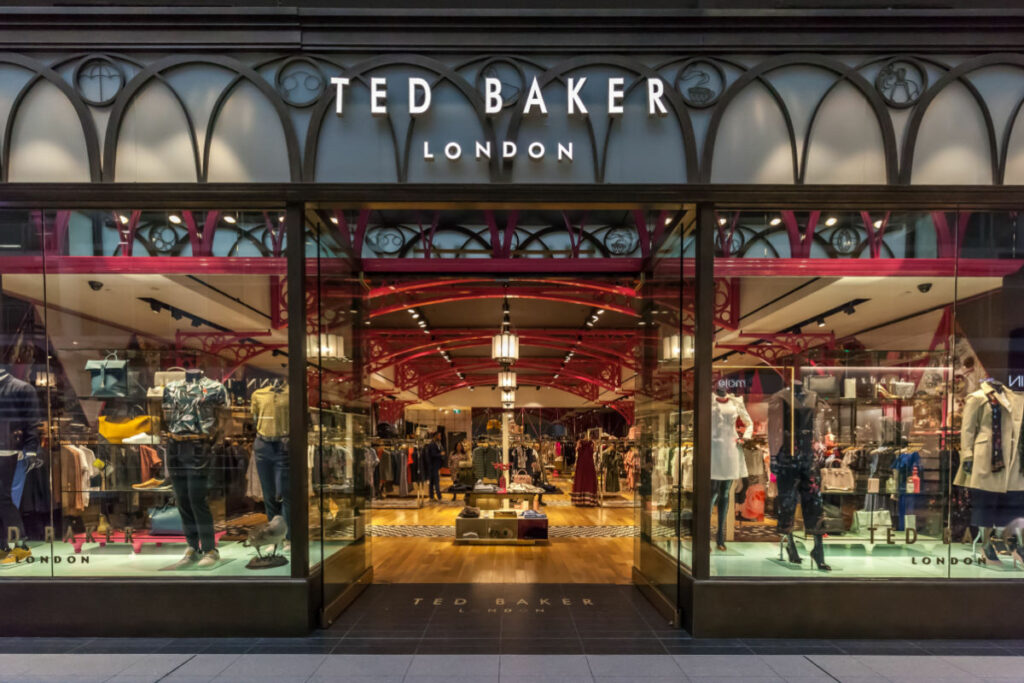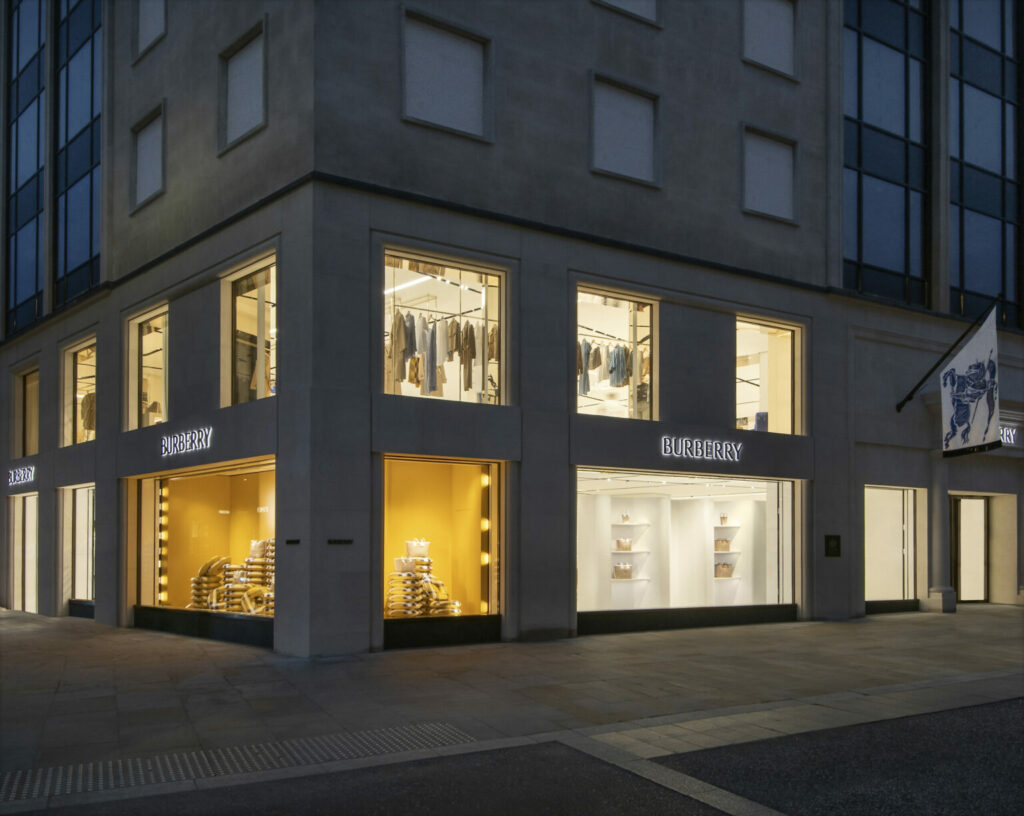Covid-19 has hit the fashion industry hard over the past two years but one of the world’s largest clothing retailers, H&M, heralded a “strong recovery” last week as full-year profits increased nearly sevenfold in the year to November 30, 2021.
H&M is now focused on growth and chief executive Helena Helmersson has set out ambitious plans to double group sales by 2030 while halving its carbon emissions.
Retail Gazette looks at ways in which the fashion retailer has managed to bounce back from the effects of the pandemic.
Investing heavily in online
H&M had began investing in online before the pandemic but it intensified its efforts when Covid-19 hit and shut stores worldwide.
The investment has paid off. Online sales jumped 24% year on year in constant currencies at H&M to account for 32% of the retailer’s total sales.
But what did it invest in? H&M says creating more efficiency between stores, online and the supply chain was crucial.
“For ‘order clothes online’, it’s reached position seven on the Google results page.”
Helmersson said last year that “speed and flexibility” was a big focus. “We want to be more flexible when it comes to customer demand and also accelerate the use of AI. We want to know more about what the customers want and what to react upon.”
H&M is also harnessing using its stores to improve its online operation and has begun fulfilling online stores from its shops.
Online retail expert Martin Newman says H&M has launched various technology-led initiatives that have empowered consumers to shop how they want to, including click-and-collect and scan and buy from their app.
Clare Harris, senior vice president at business management consultancy Proxima, says these investments have made a big impact in a relatively short timeframe.
“The ability to combine the convenience of online shopping with the interactive benefits of the in-store experience really is the holy grail in fashion retail and H&M seem to be leading the way in this regard with mobile app features such as barcode scanning, visual search, and in-store stock checking available through its In-Store Mode,” she says.
Nick Boyle, director at SEO agency The Audit Lab, believes H&M’s savvy online marketing has also played a part in its recovery.
“We can get a bit of insight into their focus when analysing the organic keywords the UK website is ranking for, which is over 12,000 organic keywords,” he explains.
While Boyle points out the retailer ranks strongly for local search terms such as ‘clothes stores near me’ – for which, he points out, H&M actually ranks number one – it has recently surged up the rating for omnichannel search results.
“For ‘order clothes online’, it’s actually jumped up by 25 positions to get to position seven on the Google results page,” he highlights. “This indicates some serious SEO going on behind the scenes to get more visibility, and in turn, conversions.”
Attracting Gen Z shoppers
H&M has long focused on sustainability, launching its sustainable Conscious Collection more than a decade ago in 2010.
It has ramped up its sustainable initiatives of late with its debut PETA-approved vegan collection launching last year, and in February started offering second-hand products via Sellpy, the resale platform in which H&M holds a majority stake.
It has also using more sustainable textiles to make its clothes and has made investments in sustainable material tech firm Infinited Fiber.
Newman says these initiatives are helping H&M tap into the consumer shift to more conscious consumption.
“While not all of their range is sustainable yet they are also producing products that use organic cotton and recycled polyester. They also offer in-store recycle bins that encourage customers to play their part in driving sustainability,” he says.
“Their move to become more sustainable is helping them to win over more Gen Z and millennial consumers who want to have ‘less guilt’ when buying fast-fashion.”

Retail analyst Nelson Blackley says H&M has been smart by investing in sustainable areas that customers are buying into. “By investing in resale to help drives sales, and being able to sell items to customers more than once, makes perfect business and environmental sense. The resale market is growing, and as more fashion consumers want to buy second hand, H&M are therefore reflecting the mood of millions of their customers,” he says.
The group plan to invest around £240 million in more sustainable materials and manufacturing methods, to help it reach its target of halving its carbon emissions across the supply chain by the end of this decade.
However, Catherine Erdly, founder of The Resilient Retail Club, warns that H&M should be wary of the growing number of consumers asking whether a fast fashion company can truly be sustainable.
“With large numbers of customers claiming to be sceptical about retailers’ sustainability efforts, it would be interesting to see whether or not they’ll be able to continue to persuade customers that they truly are a sustainable business,” she added.
Harris argues that H&M have found the “magic formula” of appealing to today’s value conscious consumers whilst also taking a lead on sustainability.
“H&M are connecting it to their customer experience through their ‘Conscious’ rewards programme,” she says.
“The scheme rewards H&M members for making sustainable choices by giving them points on their rewards card promoting positive action like using their own bag or recycling clothes via the H&M owned programme.
“With over 120 million members across 26 markets, the use of rewards is a clever move in creating a loyal community whilst also making progress towards the retailer’s own sustainability targets.”
Building an agile supply chain
Creating a nimble supply chain that was been able to adapt to consumer behaviour that was radically different during the pandemic has been crucial to H&M’s recover.
Erdly explains: “During the pandemic, there were very pronounced shifts between what customers were looking to buy.
“At some points it was all about loungewear, then when things started to open up, people wanted to buy occasionwear, and then it moved back to loungewear when lockdowns were reinstated.
“H&M have been able to be agile, and adjust what they are offering the customer which has helped, in turn, drive more full priced sales and reduce their markdowns.”
“H&M have been able to be agile, and adjust what they are offering the customer”
According to its website, H&M has “strong, long-term relations” with its suppliers that are based on “mutual trust and transparency”. This has clearly paid off.
The retail expert agrees that H&M has gone back to doing what it does best, “creating on-trend, affordable fashion” and has a supply chain that enables it to do so.
“By improving their supply chain and its efficiency, they’re able to meet consumer demand for more regular updates and drops in their range.”
Those three vital pillars have helped H&M emerge from unscathed from the Covid storm. Now with normality on the horizon, those same three pillars should help H&M as it marches towards its ambitious 2030 targets.
Founded in 1947, H&M has grown into one of the most recognisable retailers in the fashion industry, with more than 5000 stores worldwide.
Although Covid-19 led to a huge shift online, H&M has invested heavily online after revealing plans in early October 2020 that it will shutter 250 stores globally.
By mid-2021, H&M appeared to be recovering from the pandemic, but not without some difficulty. In June 2021, the company reported sales jumped 25% from the year before but were down 4% from its 2019 numbers.
The pandemic also led to sustainability being at the forefront of consumers’ minds, so H&M is not out of the mix with its Conscious collection.
With this collection, H&M pledges to make it easy for customers to choose sustainable options. Additionally, it made these sustainable collections affordable to even the average consumer.
Since its founding in 1947, H&M has grown to become the world’s second-largest fashion retailer, after Inditex, owner of the Zara stores.
Click here to sign up to Retail Gazette‘s free daily email newsletter

















